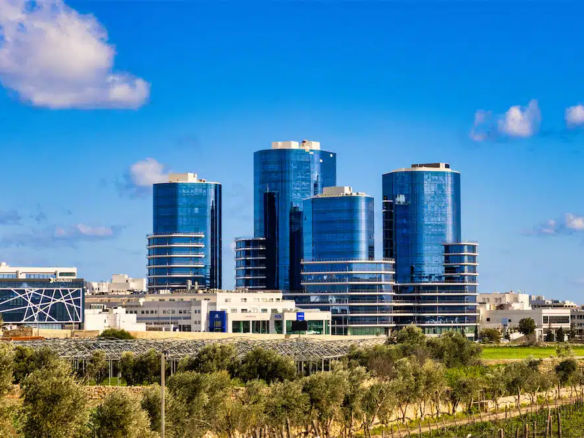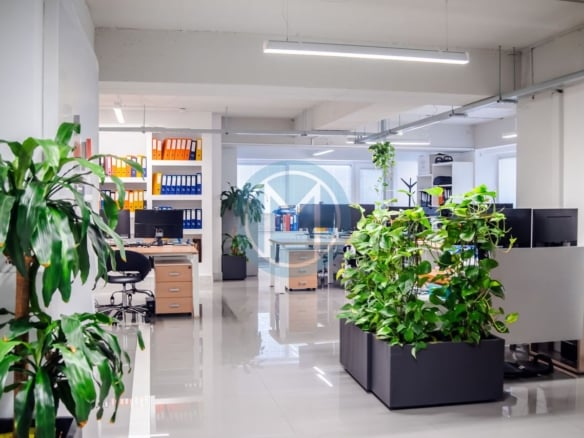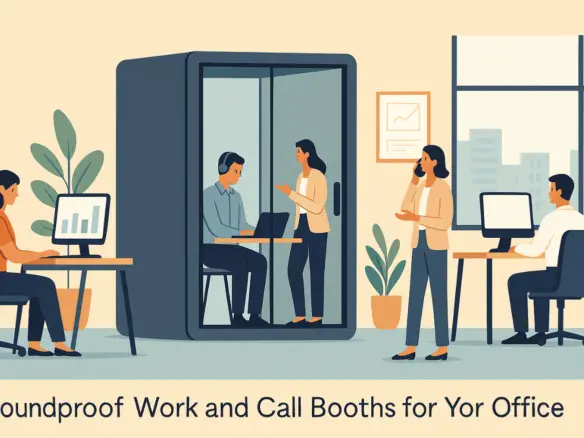Why home offices and flexible setups are here to stay
Not long ago, working from home was a perk, not a policy. Then came the pandemic, and suddenly bedrooms became boardrooms, kitchens doubled as call centres, and “Zoom fatigue” became part of our vocabulary. But unlike temporary trends, flexible work hasn’t faded.
Why? Because both employers and employees have realised the upside:
- Companies cut real estate costs and expand their talent pools.
- Staff save on commutes, claim back hours for family or hobbies, and often report higher job satisfaction.
For Malta, the stakes are even sharper. As a small island nation with dense urban centres, housing pressures, and growing demand for digital services, remote and hybrid work models reduce road congestion, ease strain on office demand, and match EU-wide pushes for greener, smarter working habits.
In other words, home offices aren’t just about comfort. They’re becoming the backbone of how business gets done. But to make them effective, you need to design them right.
The anatomy of an effective home office
Not every desk in a corner qualifies as a “home office.” Productivity comes from deliberate choices.
Think of the setup as a series of design decisions:
| Component | Attribute | Example Value | Why It Matters |
| Desk | Size & adaptability | Compact foldable desk vs. full workstation | Matches space constraints |
| Chair | Ergonomic support | Adjustable lumbar support, height control | Prevents long-term strain |
| Monitor | Position & size | 24–27 inch eye-level screen | Reduces eye/neck fatigue |
| Storage | Accessibility | Floating shelves, under-desk drawers | Keeps clutter out of sight |
A compact flat in Valletta might rely on a wall-mounted fold-out desk, while a suburban home could dedicate an entire spare bedroom to a full workstation. The principle is the same: choose elements that fit the space and the user, not the other way around.
A common mistake? Skipping ergonomic chairs. Yes, they cost more upfront, but compare €300 on a chair vs. thousands in physio bills later – the math is clear.
Lighting, sound, and air: the hidden factors shaping focus
You can buy the best desk and chair in the world, but if your lighting, acoustics, and air quality are poor, your productivity will still crash.
- Lighting: Natural daylight should be prioritised, with desks ideally near windows. Supplement with task lamps for cloudy days. Studies show 500–1000 lux is the sweet spot for focused work.
- Sound: Urban apartments in Malta face constant traffic noise. Acoustic curtains or even a thick rug can cut perceived noise significantly. Aim for under 50 dB to avoid concentration loss.
- Air: Poor ventilation increases error rates. Indoor plants like peace lilies or snake plants help, but proper airflow is better. A small HEPA filter can improve indoor air quality (IAQ) for less than €100.
These “invisible” factors separate a draining workspace from one that keeps you alert and calm.
Tech and connectivity: your digital office backbone
A home office without robust tech is like a car without an engine.
Minimum requirements today:
- Internet speed: at least 100 Mbps download for video calls and cloud platforms.
- Hardware: a docking station allows a laptop to mimic a desktop setup, while noise-cancelling headsets are now standard kit.
- Collaboration tools: Slack, Teams, Zoom, Asana, or Trello aren’t optional – they’re your new office corridors.
| Tech Item | Attribute | Example Value | Why It Matters |
| Internet | Speed | 100 Mbps+ | Smooth calls, fast uploads |
| Hardware | Mobility | Laptop + docking station | Flexibility without losing power |
| Headset | Noise control | Active noise cancellation | Clearer calls, less fatigue |
Without these basics, even the most beautiful workspace collapses under the weight of frozen screens and dropped calls.
Designing for productivity vs. creativity at home
Here’s the catch: no single space can maximise both focus and creativity.
- For focus (deep work):
- Quiet zones, noise-absorbing surfaces
- Cooler lighting (~4000K)
- Minimal visual clutter
- Quiet zones, noise-absorbing surfaces
- For creativity (brainstorming, ideation):
- Standing desks or flexible tables
- Warmer lighting (~3000K)
- Whiteboards, cork boards, or “idea walls”
- Standing desks or flexible tables
Some remote workers carve dual-purpose setups. For instance, a spare room can double as a quiet pod with acoustic panels during the day, but when the whiteboard rolls out and lights dim, it turns into a creativity hub.
Neurodivergent workers often emphasise this split more strongly. For someone with ADHD, low-stimulation zones are crucial for focus, while brightly coloured, tactile spaces may energise ideation.
Flexible work setups: beyond the home office
Working from home isn’t the only option. Many people prefer hybrid models – mixing home, coworking hubs, and corporate spaces.
- Coworking hubs in Sliema and Valletta now offer day passes, hot desks, and even child-friendly zones.
- Corporate hot-desking policies let staff use shared workstations on office days, reducing total space requirements.
| Workspace Type | Flexibility | Best For |
| Home office | High (customisable) | Focused, individual work |
| Coworking | Medium (membership-based) | Networking, collaboration |
| Hot-desking | Variable (company policy) | Teams balancing office time |
The right choice depends on role, personality, and budget. Some thrive on the social buzz of coworking spaces, while others find them distracting and prefer home quiet.
Movement, boundaries, and wellbeing in flexible setups
One of the biggest risks of flexible work? Blurred boundaries. Without commutes or clear “end of day” markers, burnout creeps in.
Tips to manage:
- Movement: Set timers for microbreaks. Walk during calls. Standing desks encourage circulation.
- Boundaries: Create a “shutdown ritual” – closing the laptop, turning off lights, or even stepping outside signals the end of work.
- Wellbeing: Track screen time, schedule exercise, and make sure the coffee corner doesn’t replace proper meals.
Think of it as urban planning applied to your home. Just as cities use “desire lines” to manage foot traffic, your home office can use rugs, lighting, or shelves to subtly mark “work zones” vs. “life zones.”
Space-saving design tricks for small apartments
Malta’s apartments are often compact, so creativity matters.
- Wall-mounted fold-out desks: Disappear when not in use.
- Modular shelving as partitions: Divide space while adding storage.
- Vertical zoning with plants: Creates visual separation without eating square footage.
Example: a 45 m² apartment in Sliema was reconfigured to include a full home office using only modular bookcases, fold-out tables, and strategic lighting cues.
| Furniture | Attribute | Example Value | Advantage |
| Desk | Footprint | Wall-mounted fold-out | Frees space instantly |
| Shelves | Flexibility | Modular units on wheels | Room dividers + storage |
| Seating | Dual use | Dining chairs doubling as guest seating | Saves costs |
Small doesn’t mean compromised. It just means more strategic.
Cost vs. return: what flexible setups really save
It’s tempting to view home or hybrid setups as expensive because of upfront costs – new chairs, upgraded internet, maybe a subscription to a coworking hub. But the lifecycle savings are substantial:
- Employees save hundreds per month on commuting, eating out, and dry cleaning.
- Companies reduce office leases, utilities, and maintenance.
- Society gains from fewer cars on the road and reduced carbon emissions.
Example: a Maltese SME reported cutting rental space by 30% after adopting hybrid policies, saving over €50,000 annually.
The real question isn’t “is it expensive?” but “can you afford not to adapt?”
How to measure success in your home or flexible setup
What gets measured gets managed. Flexible work only works if you track its impact.
- For individuals:
- Task completion rates
- Error frequency
- Self-reported stress levels
- Task completion rates
- For companies:
- Absenteeism rates
- Employee retention
- Cost savings on office overheads
- Absenteeism rates
| Metric | Attribute | Example Value |
| Productivity | Completion rate | 95% of tasks delivered on time |
| Wellbeing | Stress survey | 70% report improved balance |
| Costs | Rental footprint | 30% reduction in office space |
Smart meters, time-tracking tools, and employee surveys are easy ways to collect this data. Some Maltese firms even publish these sustainability and productivity KPIs in their annual reports – turning workplace design into a branding tool.




